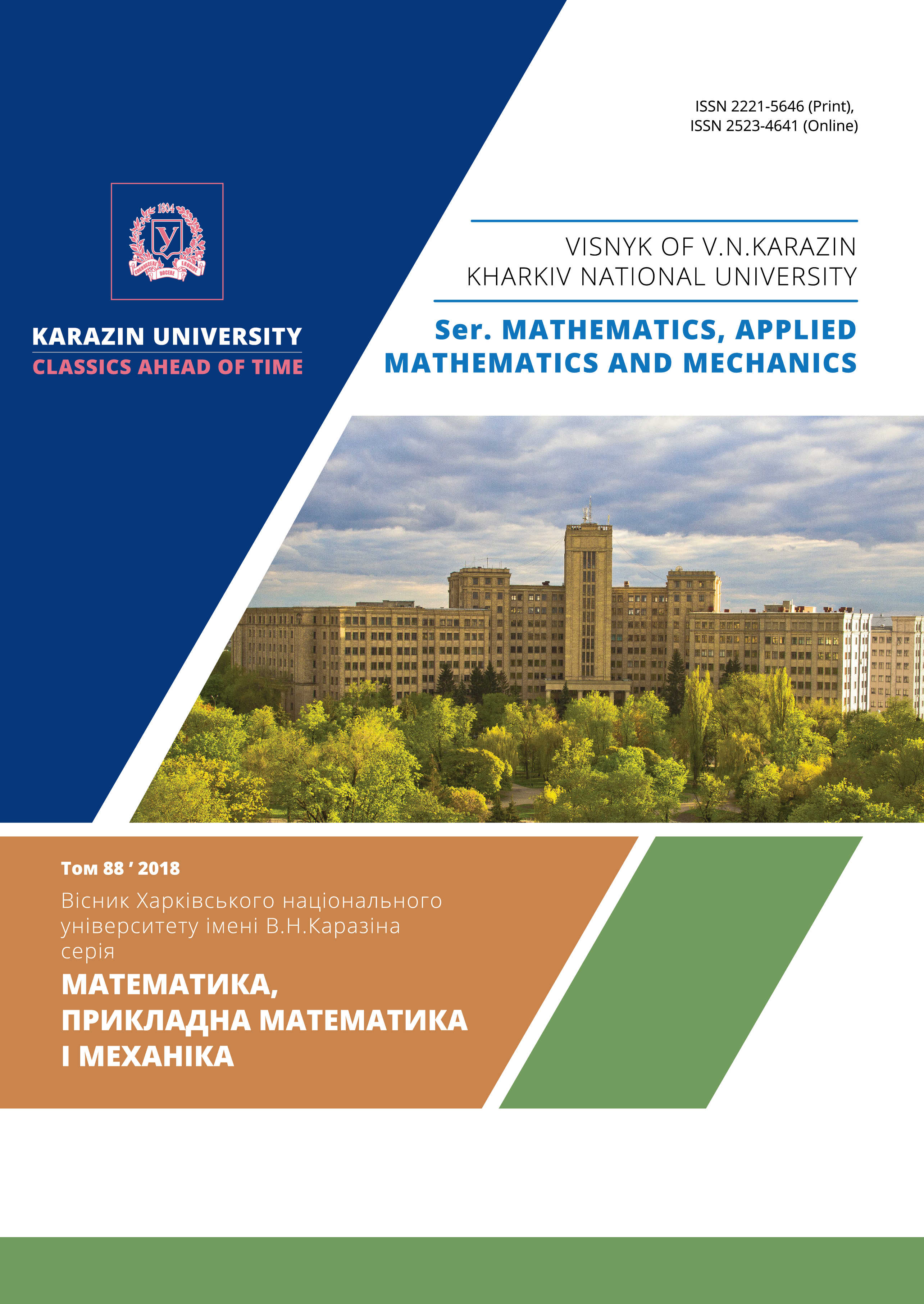Mathematical modeling of bioactive arterial wall
Abstract
Biological tissues and their artificial substitutes are composed by different fibers and possess complex viscoelastic properties. Here the most popular 3-element and 5-element rheological models of human soft tissues as viscoelastic bodies are considered accounting for the time delay between the load and mechanical respond of the material.The obtained data compared to the experimental curves got on the vessel wall and heart tissues.
Downloads
References
H. Fr\"{o}hlich. Coherent Excitation in Active Biological Systems. In: F. Gutmann, H. Keyzer (eds). Modern Bioelectrochemistry. Springer, Boston, MA.,-- 1986 -- P. 241--261.
D. Saintillan, Rheology of Active Fluids. Annual Review of Fluid Mechanics, -- 2018 -- 1. 50. -- P. 563--592.
M.C. Marchetti, J.F. Joanny, S. Ramaswamy, T.B. Liverpool, J. Prost, M. Rao, S.R. Aditi, Hydrodynamics of soft active matter. Reviews of Modern Physics, -- 2013. -- 3. 85. -- P. 1143--1189.
V. Bratanov, F. Jenko, E. Frey, New class of turbulence in active fluids. Proceedings of the National Academy of Sciences,-- 2015. -- 49. 112. -- P. 15048--15053.
S.R. Caplan, Autonomic energy conversion. II. An approach to the energetics of muscular contraction. Biophys J., -- 1968. -- 8. -- P. 1167-1193.
S.A. Regirer, I.M. Rutkevich, P.I. Usik, Model of vascular tone. Mechanics of Polimers, -- 1975. -- 4. -- P. 585--589.
N.Kh. Shadrina, V.A. Buchin, Mathematical Modeling of the Response of a Resistive Vessel to Pressure. Biophysics, -- 2009. -- 2. 54. -- P. 188--192.
S.A. Regirer, N.Kh. Shadrina, A simple model of a blood vessel with the wall sensitive to mechanical stimuli. Biophysics, -- 2002. -- 5. 47. -- P. 845--850.
N.N. Kizilova, E.N. Filippova, The model of arterial tree with autoregulation as viscoelastic chamber from bioactive material. Mechanics. The scientific research and study-methodology developments. Colleted articles of Gomel, -- 2014.-- 8. -- P. 100--105. (in Russian).
H. Philippova, N. Kizilova, The investigation of the flow of viscous fluid in the viscoelastic chamber from bioactive material. Reporter Of Kyiv National University of Taras Shevhenko. Series: ''Physics and mathematics scienes'', -- 2015. -- 5. 47. -- P. 845--850. (in Ukrainian).
E.N. Solovyova, N.N. Kizilova, The analysis of descrete models of bioactive soft and fluid materials. Colleted articles of XVIII International symposium ''The methods of descrete singularities in problems of mathematical physics'' (MDOZMF-2017). Kharkіv, -- 2017. -- P. 198--201.
(in Russian).
N.N. Kizilova, E.N. Solovyova, The analysis of the rheology models of bioactive soft and fluid materials. Reporter of Kharkiv National University of V.N. Karazin. Ser. ''Mathematical modelling. Thechnology of information. Automatization systems of control''.-- 2017. -- 35. -- P. 21--30. (in Russian).
T. Bronshtein, G.C.T. Au-Yeung,U. Sarig et al., A Mathematical Model for Analyzing the Elasticity, Viscosity, and Failure of Soft Tissue: Comparison of Native and Decellularized Porcine Cardiac Extracellular Matrix for Tissue Engineering. Tissue Eng Part C Methods. -- 2013. -- Aug. -- 8. 19. -- P. 620--630.
Y. Zhu, Y. Zheng, Y.-Y. Shen et al., Analyzing and modeling rheological behavior of liver fibrosis in rats using shear viscoelastic moduli. J Zhejiang Univ Sci B. -- 2014. -- Apr. -- 4. 15, -- P. 375--381.
Biomechanics of Cells and Tissues. Experiments, Models and Simulations. P. Lecca (Ed.), -- 2013. -- 175 p.
Mechanics of Biological Tissue. G. A. Holzapfel, R. W. Ogden (eds.), Heidelberg: Springer-Verlag, -- 2005. -- 466 p.
P. Kochova, J. Klepacek, J. Hlubocky et al., Heart valve viscoelastic properties - a pilot study. Applied and Computational Mechanics,-- 2007. -- 1. -- P. 97--104.
Citations
Model of blood flow along the arterial bed, taking into account the bioactivity of the vessel wall
Solovjova O. & Kizilova N. (2019) Bulletin of Taras Shevchenko National University of Kyiv. Series: Physics and Mathematics
Crossref
The copyright holder is the author.
Authors who publish with this journal agree to the following terms:
1. Authors retain copyright and grant the journal right of first publication with the work simultaneously licensed under a Creative Commons Attribution License that allows others to share the work with an acknowledgement of the work's authorship and initial publication in this journal. (Attribution-Noncommercial-No Derivative Works licence).
2. Authors are able to enter into separate, additional contractual arrangements for the non-exclusive distribution of the journal's published version of the work (e.g., post it to an institutional repository or publish it in a book), with an acknowledgement of its initial publication in this journal.
3. Authors are permitted and encouraged to post their work online (e.g., in institutional repositories or on their website) prior to and during the submission process, as it can lead to productive exchanges, as well as earlier and greater citation of published work (see The Effect of Open Access).




